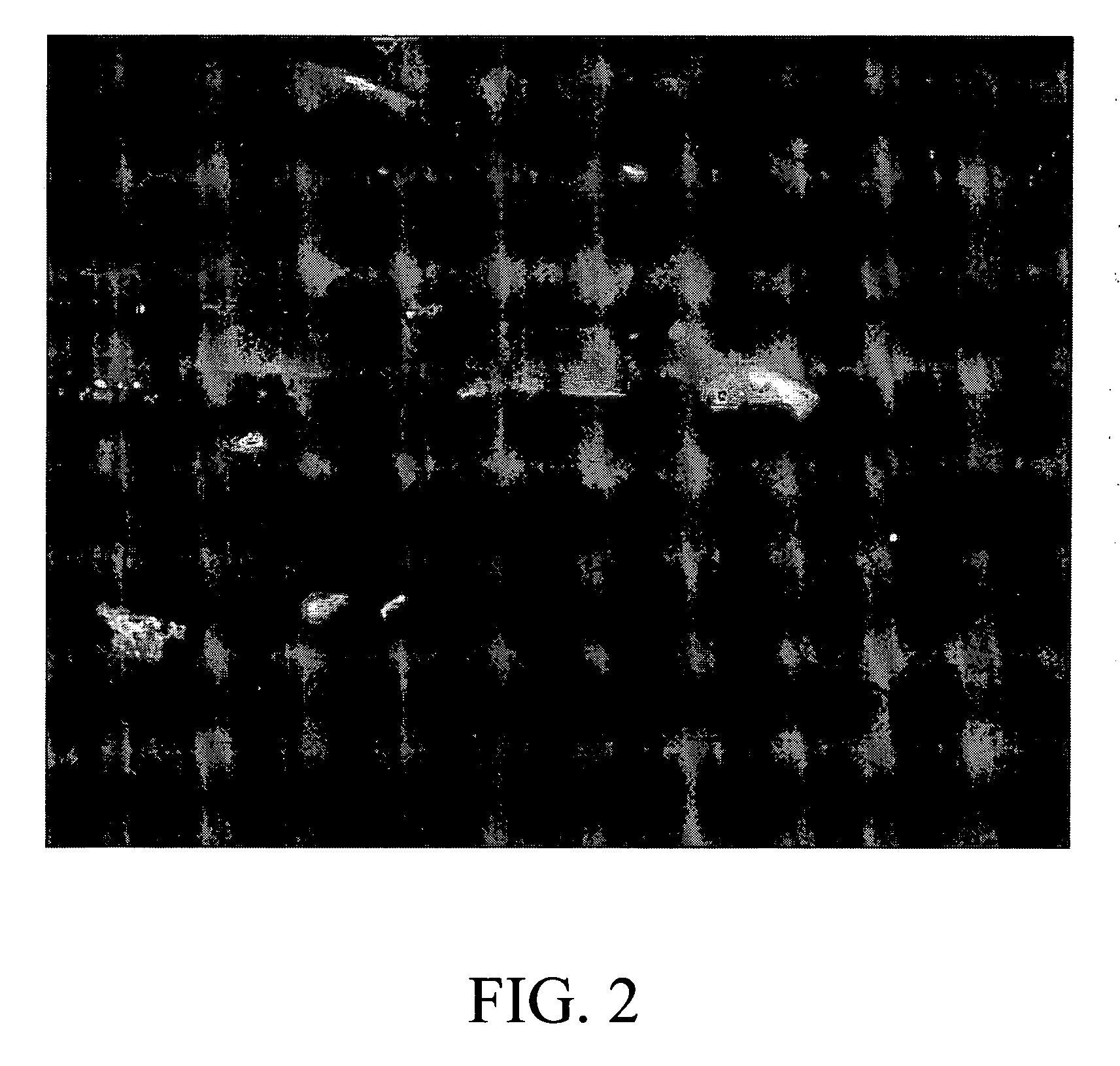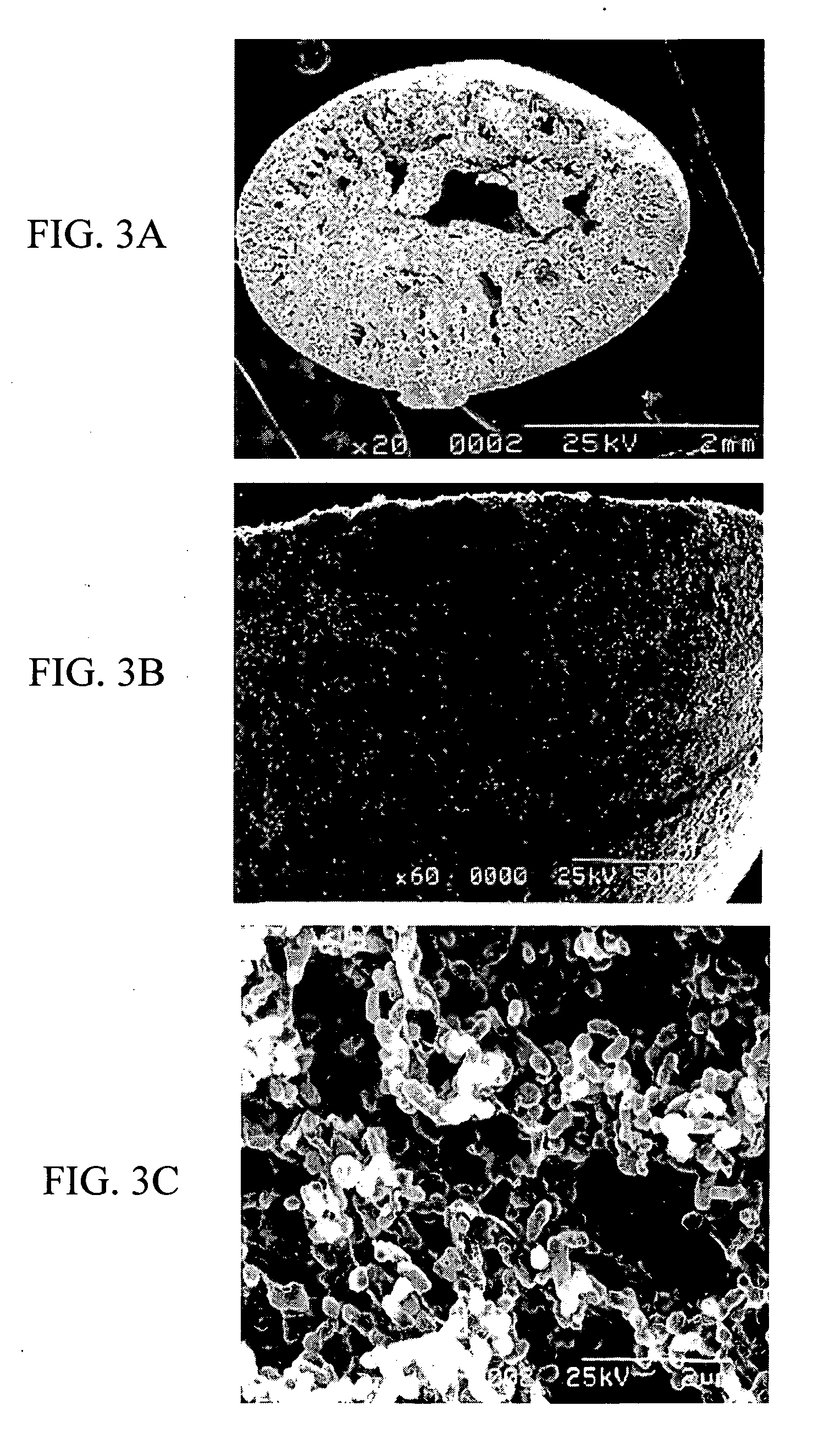Methods of sampling microbial communities and apparatus therefore
a technology of microbial communities and sampling apparatus, which is applied in the direction of microbiological testing/measurement, biochemistry apparatus and processes, etc., can solve the problems of difficult data interpretation and costly undertaking of gathering the necessary evidence for these processes, and achieve significant cost savings, reduce the cost of site assessment, and assess inexpensively
- Summary
- Abstract
- Description
- Claims
- Application Information
AI Technical Summary
Benefits of technology
Problems solved by technology
Method used
Image
Examples
example 1
Demonstration of the Utility of the Proposed Process in Defining a Subset of the Multispecies Microbial Communities Colonizing the Solid Phase Samplers:
[0064] Down well solid phase samplers were loaded with .sup.13C-enriched benzene and incubated for a month in a BTEX contaminated groundwater site. On recovery, a minor portion of specific PLFA biomarkers from the biofilm showed significantly increased .sup.13C levels after analysis by gas chromatography / isotope ratio mass spectrometry. In these experiments about 80% of the .sup.13C-labeled benzene was degraded with essentially no exchange with the benzene in the aquifer and both 16 and 18 carbon saturated and monounsaturated as well as iso and anti-iso branched saturated PLFA were shown to have incorporated .sup.13C after recovery from the Bio Sep beads incubated in the contaminant plume (R. Geyer, A. Peacock and M. Kastner [UFZ Leipzig-Halle, Germany]). This experiment establishes several critical points:
[0065] 1. Active microbial ...
example 2
Manipulation of Microbial Communities
[0068] If the aim of a microbial community manipulation is to bio-immobilize a desired compound, such as uranium (U) in a subsurface plume by the metabolic reduction of U(VI) to U(IV) by an organism such as Geobacter, then .sup.13C-acetate incorporation should parallel the accumulation of U(IV). The subject invention provides methods for the examination of such processes in situ (e.g., in the location of an U deposit). Solid phase samplers or solid supports are suspended in the plumes in wells, and substrates are provided that provide the necessary nutrients and redox conditions and other features to maximize recovery of U(IV) in the recovered solid phase extractors or solid supports. Infusion of 1-3 mM acetate solid supports or solid phase samplers inserted into the subsurface at Rifle, Colo., UMTRA site induced a greater than 3-fold increase in viable biomass, with a 7 to 10-fold increase in the specific PLFA / plasmalogens characteristic of Geob...
example 3
Down-Well Microcosm "Bio-traps" and Subsurface Sediments for Rapid Expanded-Lipid-Biomarker Analysis and DNA Recovery for Monitoring Bioremediation Microbial-Community Ecology Within Samples from Uranium-Contaminated Sites
[0070] Microbial activity is of primary importance in the bioremediation of metal-contaminated subsurface environments. One of our principal objectives is to develop more expedient and cost-effective methods for biomarker recovery and analysis, utilizing a combination of biomarkers (including and not limited to: expanded signature lipid biomarkers (SLB), polymerase chain reaction (PCR) denaturing gradient gel electrophoresis (DGGE), terminal restriction fragment length polymorphism (T-RFLP) analyses of 16S rDNA, and specific genes). These tools and the information provided thereby are used to define the viable community composition and provide indications of important specific activities relative to the impact of metals and radionuclides on indigenous microbial com...
PUM
 Login to View More
Login to View More Abstract
Description
Claims
Application Information
 Login to View More
Login to View More - R&D
- Intellectual Property
- Life Sciences
- Materials
- Tech Scout
- Unparalleled Data Quality
- Higher Quality Content
- 60% Fewer Hallucinations
Browse by: Latest US Patents, China's latest patents, Technical Efficacy Thesaurus, Application Domain, Technology Topic, Popular Technical Reports.
© 2025 PatSnap. All rights reserved.Legal|Privacy policy|Modern Slavery Act Transparency Statement|Sitemap|About US| Contact US: help@patsnap.com



